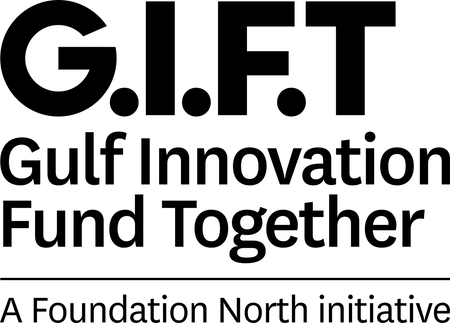Indigenous to Earth - Ngā uri ō Pāpātūānuku mē Ranginui
Who
Moana Tamaariki-Pohe and Louise Marra
2020
Awarded
$67,025
A central aim of G.I.F.T is to deepen collective understanding of the connections, interdependencies and long-term intergenerational perspectives that will restore the mauri (life force, vitality) of our whenua - land, our moana – water bodies and our tangata - people. Mauri highlights the fundamental relationship between people and the rest of nature and demands more holistic thinking and collective action (https://www.giftofthegulf.org.nz/mauri).
Indigenous to Earth aimed to engage and empower Tāmaki leaders – both young and old—with tools to champion projects in Tikapa Moana, Te Moananui ā Toi / Hauraki Gulf. The wānanga was borne from a belief that we are all indigenous to Earth – ngā uri o Papatūānuku me Ranginui. The desire was to incorporate matauranga Māori through traditional practices using maramataka, waka and wananga facilitated by Māori.
The start of the programme - April 2020 - coincided with lockdowns in response to COVID-19. Face-to face gatherings were not possible or desirable. As a result, the facilitators had to ‘flip the script’ and shift from planning face-to-face wananga to developing a series of online webinar sessions.
Four webinars were designed as a journey for people dedicated to deepening, grounding and creating new connectivity between self, others and Papatūānuku. Participants were encouraged to explore what being indigenous to the planet looks like as one people. Between 21-50 people participated in each webinar session.
“Through the online sessions I noticed how people were looking, searching and sometimes desperate for interconnectedness. I witnessed a deep longing for information and immense respect and appreciation for matauranga Māori.”
In early November 2020, a three-day, face-to-face wananga was delivered on Waiheke Island, followed by a one-day wananga at Okahu Bay at the end of November. Participants were guided through a range of activities to build different ways of understanding themselves in relation to nature and to enhance their commitment to take action to increase the mauri of the Gulf.
In one of the activities, participants were introduced to the elements of fire, water, earth and air in the context of the kaupapa. The purpose was for participants to understand the severity of the crisis in the Gulf by experiencing what it feels like to be a connected part of nature, of the environment - enough to commit to taking action.
Across the next two days participants learnt about the maramataka, conscious kai and pare kore (waste minimisation) from Māori experts, including rangatahi environmental leaders. Facilitators used the concept of ‘system constellation’ to access the mauri and the wairua – the essential nature and life force and how it wants to move through a system. These processes are about enabling a system to see itself and what is holding it back and what needs to move, bypassing the normal conditioned mind way of seeing the problem. The insights generated were:
· Business was one of the key change makers, and business and Mana Whenua need to work together to create the change
· Community need to be in the centre
· Youth are compelled, need to lead and want to be close to the centre
· Funders and others need to support young people to make change
· Government will not be a first mover of change in the Gulf.
On the final day at Okahu Bay, participants reconnected with the korero of the four elements in the context of waka ama.
The leaders, influencers and learners who registered for The Indigenous to Earth - Ngā uri ō Pāpātūānuku mē Ranginui programme included participants from around Aotearoa and internationally. Many had connections to the Hauraki Gulf Marine Park or were looking to strengthen their connections. The facilitators noted the critical need for new pathways forward that not only acknowledge the health of the Gulf, but take seriously the social, economic and cultural dimensions of well-being; that are intimately and intrinsically connected to the whenua and the moana.
“Climate and the problems with the gulf [are] not technical; it is about working together collaboratively and about caring enough to all come together to do something about it”
The impact of COVID-19 presented the main challenge for the programme. The inability to meet face-to-face made co-designing the programme difficult. Mana whenua participation in the webinar series was a challenge as the preference is for kanohi ki te kanohi (face to face engagement).
There were several logistical challenges with the delivery of the wananga including short notice change in venues and accommodation options requiring a quick pivot. The impacts of COVID-19 also meant that Tāmaki leaders had less availability, and some businesses were unwilling to release staff for the wananga.
After the wananga, many participants have remained in contact and are supporting various kaupapa. Some participants have started working collaboratively on projects and actively encourage their whānau and wider communities to get involved with existing organisations making a difference. The consensus among the group is that supporting current kaupapa is a better use of time than initiating another kaupapa that replicates an existing one. These projects include the Marine Education Research Centre, Iwi and Hapu led activity, community nurseries and design for conservation. Several new project opportunities have also been identified. Participants have also made personal changes such as committing to learning Te Reo.
“The group has demonstrated that they will encourage others to actively participate in, on and around Tikapa Moana, Te Moana Nui ā Toi, Hauraki Gulf Marine Park to help revitalise the mauri of our taonga”
